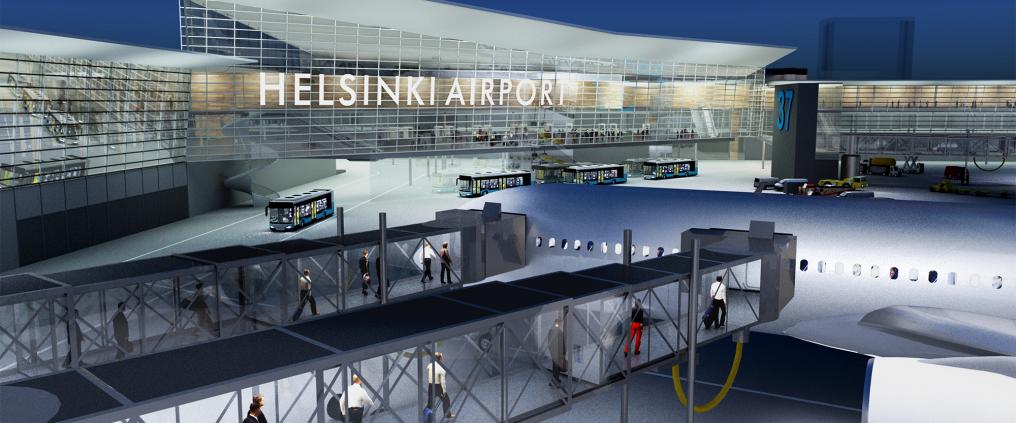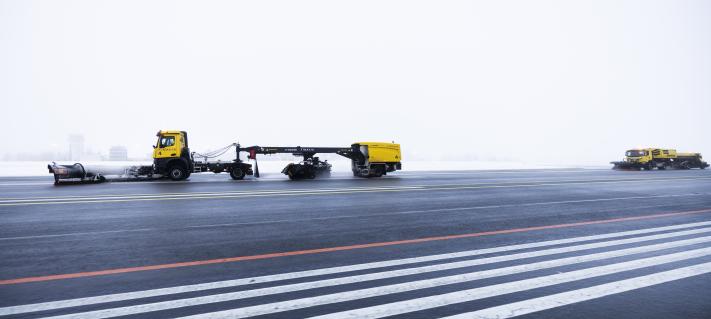“The major investments within the development programme will enable us to maintain good flight connections to Finland and strengthen Helsinki Airport’s position in the worldwide competition. We are confident that the project will prove profitable for Finavia and support the competitiveness of the Finnish economy”, says Kari Savolainen, CEO of Finavia Corporation.
It is predicted that traffic between Asia and Europe will increase strongly in the coming years. The airport expansion will make it possible to serve 20 million passengers.
Lemminkäinen and Destia appointed contractors
After an exceptionally comprehensive and interactive tendering process, Finavia selected Lemminkäinen as the contractor for the terminal construction work and Destia for the groundwork on the apron.
Our aim was to carry out the tendering process for both contracts in a fair and transparent manner.
"The process was monitored by impartial experts from Infra ry and the Confederation of Finnish Construction Industries RT,” says Finavia’s technical director, Henri Hansson.
In addition to costs, Finavia’s evaluation criteria included quality factors. There was also an emphasis on cooperation skills, which were tested in interactive workshops.
Finavia’s intention was to find partners that were able to commit themselves to a collaborative construction method, not yet very commonly used in Finland.
Implementation as collaborative construction
The expansion of the terminal will be carried out using the construction management (CM) method and the work on the apron with an alliance project method.
In both contracts, the emphasis is on mutual goals as well as on the cooperation between Finavia, the planners and the contractors.
In order to coordinate the two projects, Finavia defined goals and related incentives with regard to costs, schedule, safety and quality. The quality goals included passenger satisfaction and recyclability of materials. The contractors will also benefit from the goals being met.
According to Hansson, instead of splitting the project, Finavia opted for collaborative construction because the new model best supports the objectives set for the expansion. It also enhances Finavia’s own allocation of resources.
The second stage of the Helsinki Airport development programme in practice
Autumn 2015 will, for the most part, be spent planning the project. Construction work on the passenger terminal and the groundwork on the apron are expected to begin in early 2016. However, it is possible that the construction of a new building for apron buses can start during the autumn.
The expansion work in the terminal will begin at the southern wing of the current non-Schengen area early in 2016. After the completion of the apron bus terminal, construction work can commence in the western wing, which is currently scheduled for early autumn 2016.
The western wing and the whole expansion of the non-Schengen area of the terminal are to be completed by summer 2020. The floor area of Helsinki Airport will increase by 45 per cent.
Extensive groundwork will be carried out in the areas where planes taxi and park. The site comprises 330,000 m2, which equals 65 football fields.
In addition to the construction and groundworks, Finavia will invest in eight new passenger boarding bridges and a luggage transport system. The value of the investment is about EUR 50 million. The suppliers will be appointed at a later date.
The second stage of the development programme also includes investments in the maintenance depot, developing apron level I and other preparatory work. The budget of the second stage amounts to approximately EUR 400 million.
The construction site will be one of the largest in Finland.
The investment, about the scope of three Helsinki Music Centres, has an employment effect of several thousand person-years.
Finavia focuses on an enjoyable airport
Helsinki Airport's strengths include short transit times, friendly staff and world-class service. They are to be preserved also as the passenger volume increases.
In addition to restaurants and shops, Finavia will focus on enjoyable services. New digital solutions will help to make getting to flights smooth and easy.
Finnishness is the common denominator in both interior materials and services. Various audio and lighting solutions will be used to create a comfortable atmosphere in the common areas.
Towards 20 million passengers
In 2013, Finavia launched an extensive Helsinki Airport development programme amounting to approximately EUR 900 million. The goal of the programme is to meet the requirements of growing passenger volumes. Having an internationally competitive airport is important for the well-being of Finland as a whole.
Finavia’s development programme is also a national investment. Air traffic provides employment to approximately 100,000 people in Finland, either directly or indirectly. The development programme, extending to 2002, will create 5,000 new permanent jobs at Helsinki Airport. During the construction stage, its employment impact is 14,000 person-years.



